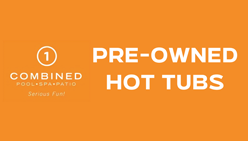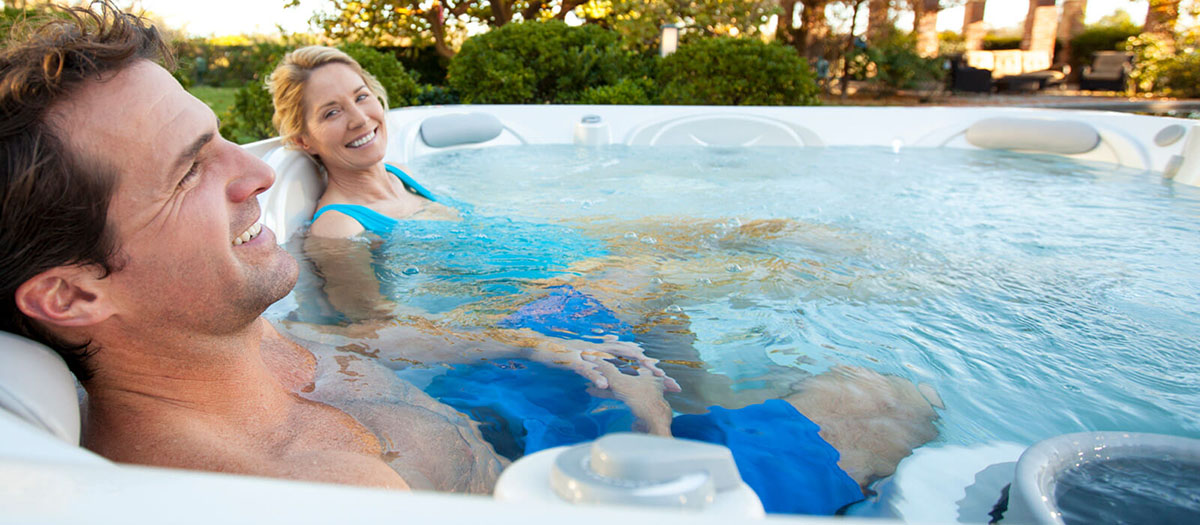Combined Pool & Spa
Search Our Website

FAQ
How Much Do Inground Pools Cost?
Fiberglass vs Concrete vs. Vinyl Liner Pools: Which Is Best?
Is there an unbiased comparison of inground fiberglass pools, vinyl liner pools, and concrete pools on the internet? A client who recently purchased my swimming pool ebook “6 Steps to Pool and Patio Success” doesn’t think so. He stated in an email:
“As you’re no doubt well aware, it’s a desert wasteland when trying to find information on pools…. Sorting through the internet for useable information is difficult in the extreme. Of the few forums I’ve found, most devolve into trolls arguing gunite vs. fiberglass vs. vinyl liner – over and over and over and over. ”
“What would help a great deal is to find some kind of unbiased information that explains each pool in detail and then backs off – letting me (or the customer) make the final decision.”
Well, Michael, this article is my effort to provide an objective source of information about the three types of inground swimming pools. The approach is simple. I list the advantages and disadvantages of inground fiberglass pools, vinyl liner pools, and concrete pools……then “back off” so you can form your own opinion.
Here you go:
FIBERGLASS POOLS: PROS AND CONS
Advantages:Low maintenance: The gel coat surface of the fiberglass pool shell is nonporous. This inhibits the growth of algae and reduces the amount of sanitizing chemicals required to maintain the pool.
Little or No lifetime cost: 99% of the time there is never any money invested in the shell of fiberglass pools. No vinyl liner to replace and no resurfacing.
Non-abrasive surface: The gel coat surface of fiberglass pools is smooth to the touch.
Built-in Seats and Steps: Most fiberglass pool designs have seating and all have steps incorporated into the shell of the pool.
Manufactured in controlled environment: Fiberglass pools are built in the controlled climate of a factory.
Quick installation: Because the shells of fiberglass pools are built off site, the installation occurs more rapidly….3-5 weeks on average.Disadvantages:
Limited shapes and designs: Because fiberglass pools are built from a mold, the consumer is limited to the shapes and sizes offered by the various fiberglass pool manufacturers.
No wider than 16′: Fiberglass Pools are shipped via the road. Shipping restrictions limit the width of the fiberglass pool shell to 16′.
Repairs on some colored finishes do not match: Many fiberglass pool manufacturers use colored finishes that do not match in the unlikely event that a repair is needed. For more infomation read my blog: http://blog.riverpoolsandspas.com/blog/bid/22712/Top-5-Fiberglass-Pool-Problems-and-Solutions
Higher initial cost: Fiberglass pools are more of an initial investment; usually at least $5k more than vinyl liner pools and about the same as concrete pools.VINYL LINER POOLS: PROS AND CONS
Advantages:Low initial cost: Vinyl Liner Pools have the lowest initial cost of any of the three types of inground pools.
Customizable shape and size: There are no limitations of the length, width, and depth of Vinyl Liner Pools.
Vinyl liner pools are nonabrasive: The vinyl liner material is smooth to the touch.
Doesn’t foster algae: The vinyl material used in vinyl liner pools is also relatively non-porous so it inhibits algae growth.Disadvantages:
Higher lifetime cost: On average a vinyl liner will last between 7 and 15 years at a replacement expense of $2,500-$3,500 plus the cost of water.
Liner warranties pro-rated: Many vinyl liner manufacturers have a 20 year pro-rated warranty….read the fine print.
Have to use pool with care: Dogs, kids throwing stuff in the pool, tree limbs, etc. are all concerns. The liner is only 20-30 mil thick, which is the thickness of several sheets of paper. One mistake could cost you big bucks.
Lower resale value: When you go to sell a home with a vinyl liner pool, one of the first questions asked is “how old is the liner?” If it’s more than 3-4 years old, there’s a significant chance a request will be made to replace the liner before the sale of the house, or the value of the pool will be depreciated.CONCRETE POOLS: PROS AND CONS
Advantages:As big as you want: Concrete pools can be any size, shape, or depth.
More flexibility with design features: Vanishing edges, beach entries, tanning ledges, etc. are all just a sketch away from reality with concrete pools.
Works of art: Concrete Pools can be integrated into design as a literal work of art in the landscape.
Disadvantages:High lifetime cost: Concrete pools will need to be renovated every 10-20 years. This involves resurfacing and re-tiling the pool at an expense of $8k-$15k or much higher depending on the pool.
More chemical use: Because the surface of concrete pools is very porous, more chemicals and filtration are required to prevent algae. The alkaline pH of the pool shell also constantly raises the pH of the water, requiring the frequent adding of acid to counteract the effect.
More maintenance: Concrete pools also need to be frequently broomed or swept with a pool brush to remove algae from the pours of the plaster or aggregate surface.
Longer install time: Concrete pools take longer to install….usually 2-4 months.How Do I Choose The Right Fiberglass Pool Design For Me?
It’s important to ask yourself these two important questions when looking for the right fiberglass pool:
1. How do I find a design that will meet my shape, size, and style needs?
2. How do I find a fiberglass pool manufacturer that produces a quality product and stands behind their product with excellent customer service?
Let’s talk about finding the right manufacturer first.
COMPARING FIBERGLASS POOL MANUFACTURERS
If you’re not familiar with our approach here at River Pools, we try to be transparent in all that we do. We share everything we know about pools with the world because we believe it helps pool owners make informed decisions and also helps pool contractors build better pools.With that in mind here are 4 Things you should consider when comparing fiberglass pool manufacturers:
1. The Way The Pool Is Manufactured
The fact is that not all fiberglass pools are created equal. To understand the differences between manufacturers you really need a base understanding of how fiberglass pools are made.
We lovingly refer to our methodology as “The Composite Sandwich of Awesomeness”. If you’d like a crash course in the science of fiberglass pool production you should really check it out.
2. The Warranty
On the surface, it appears as though virtually all fiberglass warranties are the same. However this is not true. There are several differences that might not seem significant, but can become quite a big deal if warranty work is ever required. For example, most (if not all) other fiberglass pool manufacturers make the homeowner responsible for draining and bracing the pool, as well as refilling the pool, and replacing the start-up chemicals if a repair is needed.
It’s not as if repairs on fiberglass pools are a regular thing, but if it’s my pool the last thing I want is to be responsible for these expenses that only “rub salt in the wound”, so to speak. You can click on the links below to read our warranties.
River Pools Powered By Thursday Pools Warranty With FPA
River Pools Powered By Thursday Pools Warranty Without FPA
You’ll notice that we have two warranties, one for pools with The Fiberglass Pool Anchoring System (FPA) and one for pools without. If you’re not familiar with the FPA you should check it out because it provides the only fiberglass pool warranty in the world that warranties the pool when it is drained. Learn all about it here.
3. The Quality Of Their Dealers
Just as all fiberglass pool shells are not created equal, the same applies to the dealers and installers. We have developed a methodology that virtually eliminates most of the risk associated with fiberglass pool installations called Rhino-Loc Construction which you can learn more about here.
4. Your Gut Feeling
As crazy as it sounds, we’ve talked with literally thousands of folks about pools over the years and there have been many occasions when people who chose to go with someone else called us back and said something like, “ya know, I just should have followed my gut.”
How Do I Take Care of My Hot Tub Filters?
Your hot tub filters are absolutely essential to maintaining clean water and ensuring proper performance of your hot tub. Dirty, clogged or worn-out filters will fail to trap contaminants and put a strain on your spa’s jet pumps.
Your genuine Watkins® filters are designed to last 2 to 3 years. Here’s how to take care of them.
MONTHLY
Once a month, it’s a good idea to remove your filters and spray them with a garden hose to remove any debris that may have accumulated between the folds.THREE TO FOUR MONTHS
Whenever you change out the water in your hot tub, give your filters a full cleaning. Remove them from the spa and spray away any debris that has accumulated between the folds with a garden hose.Soak the filters over night in a spa filter degreaser (see package instructions for the product you’re using). After soaking the filters, spray them clean and replace.
Do not use a pressure washer or dishwasher to clean your filters.
Tip: You can avoid any spa down time by owning two sets of filters. Simply switch the filters to be cleaned with your other set. Then clean and store the set you’ve removed.
TWO TO THREE YEARS
If you’ve maintained your cleaning schedule, your genuine Watkins filters should last up to 3 years. You may want to replace them sooner if maintenance has been sporadic or your hot tub has seen heavier than normal use.Replace your filters sooner if the filter is brown, gray or green, or if it stays dark yellow after cleaning. You should also replace filters if you notice that the pleated part becomes flat or the fiber begins to shred or fall apart. Also replace if the top or bottom of the canister has a split or crack.
Why 20 Minutes Matter
We recognize how tough it can be to squeeze time in for relaxing or rejuvenating amid a hectic schedule. We named our blog “20-minute Renewal” to remind ourselves (and our readers) that even a modest effort can put us on the path to establishing daily self-care habits. Just 20-minutes in a hot tub is all you need to release tensions, relax muscles and let go of all the clutter in your head. According to recent science, it’s no coincidence that 20 minutes seems ideal. In recent years, there has been an increase in academic study on the effects of spa use—also called warm water immersion—particularly in 20-minute intervals.
Two researchers are leading the charge, Dr. Bruce Becker of Washington State University and Dr. Doreen Stiskal of Seton Hall University, and both have focused their studies around 20-minute sessions. To get a clearer picture, let’s delve into the science.
As Dr. Stiskal puts it, “the body gains the maximum benefit of warm water therapy within 20 minutes.” Dr. Becker has conducted many studies, all focusing on immersion of 20 – 24 minutes with a temperature range of 94°– 102°.
Here are some of the benefits he observed:1. The buoyancy of the water relieves gravity, taking the pressure off joints. This can help provide relief to arthritis sufferers.
2. Immersion in water makes the respiratory muscles work harder by 60%, strengthening and building endurance in the muscles associated with breathing.
3. A 20 – 24 minute warm water immersion effects the nervous system in much the same way as meditation.
Dr. Becker’s research points to the fact that 20 minutes is the sweet spot. It’s the perfect length of time to reap the maximum of the benefits he observed. Of course, staying in longer is fine—it’s wonderful—but the benefits don’t increase after 20 minutes. As always, be sure to stay hydrated no matter how long you decide to stay in.





















.png)












